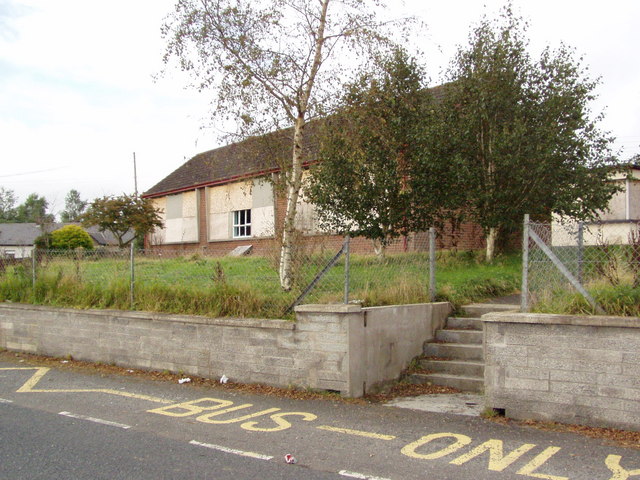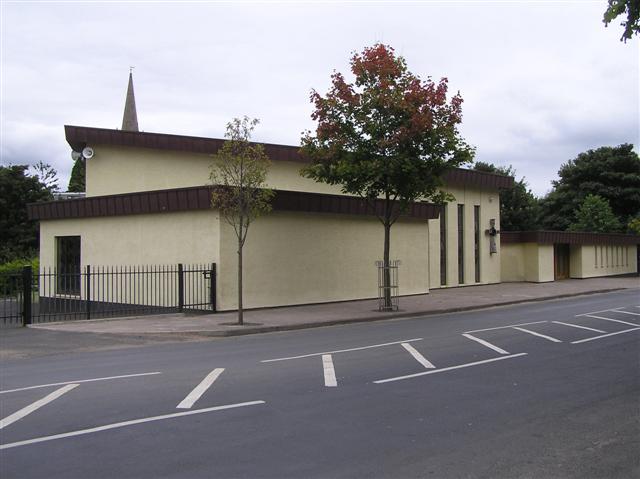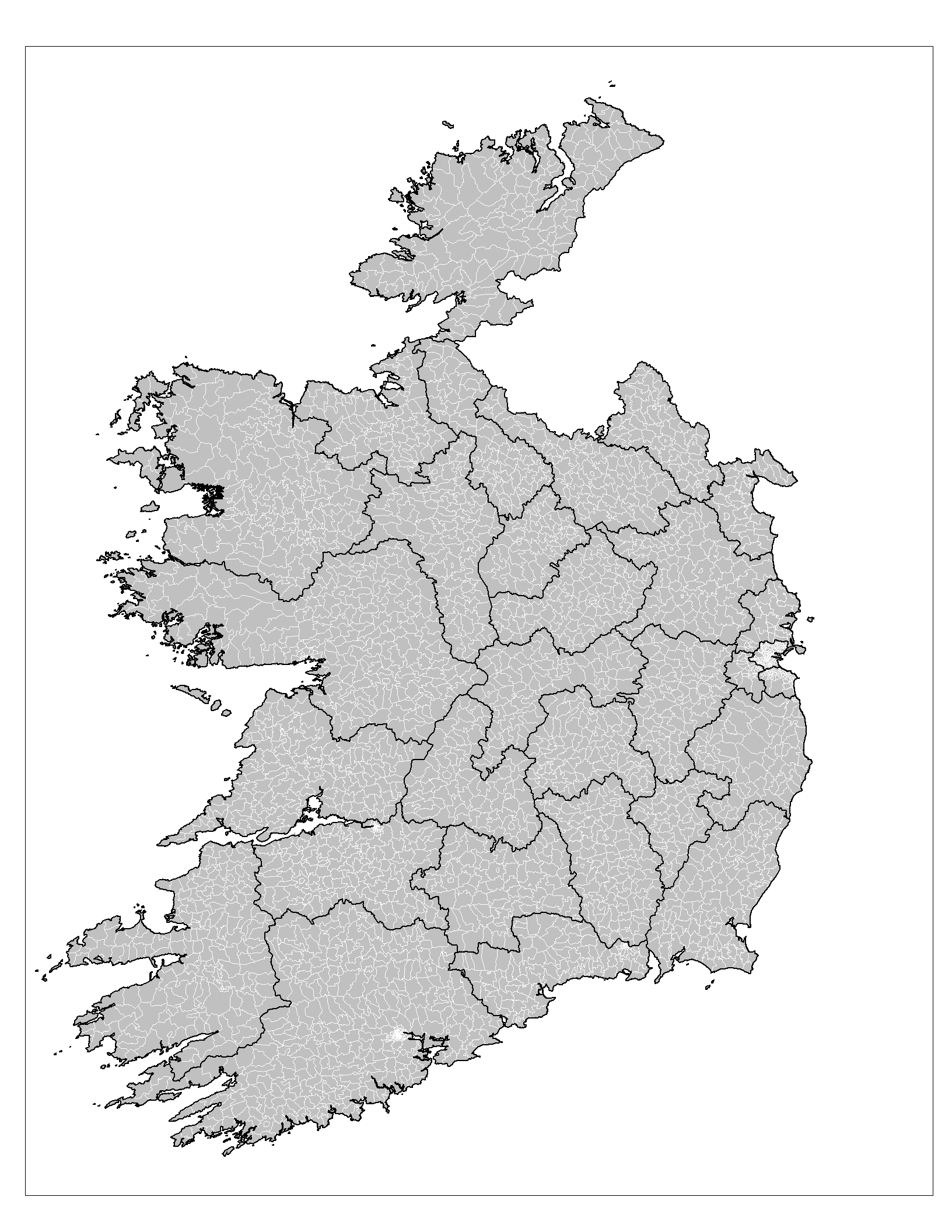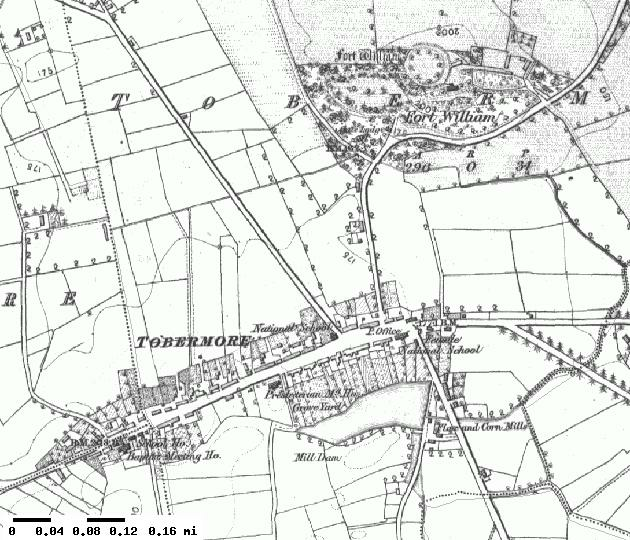|
Cloughfin
Cloughfin (, ) is a townland lying within the civil parish of Kilcronaghan, County Londonderry, Northern Ireland. It lies in the center of the parish, and is bounded by the following townlands: Calmore, Coolsaragh, Killytoney, and Tullyroan. It was apportioned to the Drapers company and freeholds. The townland was part of Tobermore electoral ward of the former Magherafelt District Council, however in 1901 and 1926 it was part of Iniscarn district electoral division as part of the Draperstown dispensary (registrar's) district of Magherafelt Rural District. It was also part of the historic barony of Loughinsholin. History Whilst Cloughfin is cited as meaning "white stone", it can not be ruled out that it may have a connection to the legendary figure, Finn McCool. There appears to be no trace left of the rock, which the townland is named after. See also * Kilcronaghan * List of townlands in Tobermore *Tobermore Tobermore (, named after the townland of Tobermor ... [...More Info...] [...Related Items...] OR: [Wikipedia] [Google] [Baidu] |
Killytoney
Killytoney (, ) is a townland lying within the civil parish of Kilcronaghan, County Londonderry, Northern Ireland. It lies in the center of the parish, and is bounded by the townlands of Calmore, Cloughfin, Coolsaragh, Gortamney, Killynumber, and Moyesset. It was apportioned to the Drapers company. The townland was part of Tobermore electoral ward of the former Magherafelt District Council, however in 1901 and 1926 it was part of Iniscarn district electoral division as part of the Draperstown dispensary (registrar's) district of Magherafelt Rural District. It was also part of the historic barony of Loughinsholin. Etymology The first element of the name Killytoney can be either from the Irish words ''coill'' (wood) or ''cill'' (church), which are indistinguishable in anglicistions due to their pronunciation. Despite this all previous authorities including Irish language scholar John O'Donovan support the derivation from ''coill''. O'Donovan also postulated that the second element ... [...More Info...] [...Related Items...] OR: [Wikipedia] [Google] [Baidu] |
List Of Townlands In Tobermore
There are 37 townlands in Tobermore electoral ward, with 22 of these also constituting the parish of Kilcronaghan. All townlands below are listed with the earliest recorded date of their modern variation as well as the Irish origin if applicable, along with a select list of earlier variations with date. Kilcronaghan ecclesiastical and civil parish There are 23 townlands in the ecclesiastical parish of Kilcronaghan. The civil parish however only contains 21, with Tullyroan and Drumballyhagan Clark being omitted. The townland of Keenaght is the only one that doesn't also form part of Tobermore electoral ward. Tobermore electoral ward There are 37 townlands within Tobermore electoral ward, the majority of which (twenty-two) reside in Kilcronaghan parish. The rest form parts of neighbouring parishes. These additional townlands are: See also *Kilcronaghan *List of townlands in County Londonderry *Tobermore Tobermore (, named after the townland of Tobermore) is a small villa ... [...More Info...] [...Related Items...] OR: [Wikipedia] [Google] [Baidu] |
Tullyroan
Tullyroan (; ) is a townland lying within the civil parish of Kilcronaghan, County Londonderry, Northern Ireland. It lies in the centre of the parish and is bounded by the townlands of: Brackaghlislea, Calmore, Cloughfin, Coolsaragh, Gortahurk, Tamnyaskey. It wasn't apportioned to any of the London livery companies, being kept as church lands. The townland was part of the Tobermore electoral ward of the former Magherafelt District Council, however in 1926 it was part of Tobermore district electoral division as part of the Maghera division of Magherafelt Rural District. It was also part of the former barony of Loughinsholin. Etymology The townland of Tullyroan is derived from the Irish ''Tulaigh Uí Ruáin'' meaning "O'Rowan's hill". ''Tulaigh'' (or ''Tulach''), which means "hillock/hill" likely refers to Belmount Hill which is in this townland. The second element could be of several different origins such as ''ruán'' in the sense of buckwheat, which grew well on small hills, ... [...More Info...] [...Related Items...] OR: [Wikipedia] [Google] [Baidu] |
Coolsaragh
Coolsaragh (, ) is a townland lying within the civil parish of Kilcronaghan, County Londonderry, Northern Ireland. It lies in the south of the parish on the boundary with the civil parish of Desertmartin, and it is bounded by the townlands of: Annagh & Moneysterlinn, Cloughfin, Gortahurk, Keenaght, Killynumber, Killytoney, Longfield, and Tullyroan. It was apportioned to the Drapers company. The townland was part of the Tobermore electoral ward of the former Magherafelt District Council, however in 1901 and 1926 it was part of Iniscarn district electoral division as part of the Draperstown dispensary (registrar's) district of Magherafelt Rural District. It was also part of the historic barony of Loughinsholin. Etymology Coolsaragh, despite the various different spellings, many of which contain erroneous letters, such as ''h'' for ''r'' and ''f'' for ''s'', appears to derive from something like ''Culsaran'' or ''Coolsaran''. The loss of the ''n'' at the end of the word, whilst n ... [...More Info...] [...Related Items...] OR: [Wikipedia] [Google] [Baidu] |
Finn McCool
Fionn mac Cumhaill ( ; Old Irish language, Old and mga, Find or ''mac Cumail'' or ''mac Umaill''), often anglicized Finn McCool or MacCool, is a hero in Irish mythology, as well as in later Scottish mythology, Scottish and Manx folklore. He is leader of the ''Fianna'' bands of young roving Kóryos, hunter-warriors, as well as being a Divination, seer and poet. He is said to have a magic thumb that bestows him with great wisdom. He is often depicted hunting with his hounds Bran and Sceólang, and fighting with his spear and sword. The tales of Fionn and his ''fiann'' form the Fenian Cycle, Fianna Cycle or Fenian Cycle (''an Fhiannaíocht''), much of it narrated by Fionn's son, the poet Oisín. Etymology In Old Irish, finn/find means "white, bright, lustrous; fair, light-hued (of complexion, hair, etc.); fair, handsome, bright, blessed; in moral sense, fair, just, true". It is cognate with Primitive Irish ''VENDO-'' (found in names from Ogam inscriptions), Welsh language, Wels ... [...More Info...] [...Related Items...] OR: [Wikipedia] [Google] [Baidu] |
Barony (geographic)
A barony is an administrative division of a county in Scotland, Ireland, outlying parts of England and historically France. It has a lower rank and importance than a county. Origin A geographic barony is a remnant from mediaeval times of the area of land held under the form of feudal land tenure termed feudal barony, or barony by tenure, either an English feudal barony, a Scottish feudal barony or an Irish feudal barony, which all operated under different legal and social systems. Just as modern counties are no longer under the administrative control of a noble count or earl, geographic baronies are generally no longer connected with feudal barons, certainly not in England where such tenure was abolished with the whole feudal system by the Tenures Abolition Act 1660. The position in Scotland is more complex, although the legal force of the Scottish feudal baron was abolished early in the 21st century.P. G. B. McNeill and H. L. MacQueen, eds, ''Atlas of Scottish History to 1707 ... [...More Info...] [...Related Items...] OR: [Wikipedia] [Google] [Baidu] |
Rural District
Rural districts were a type of local government area – now superseded – established at the end of the 19th century in England, Wales, and Ireland for the administration of predominantly rural areas at a level lower than that of the Administrative county, administrative counties.__TOC__ England and Wales In England and Wales they were created in 1894 (by the Local Government Act 1894) along with Urban district (Great Britain and Ireland), urban districts. They replaced the earlier system of sanitary districts (themselves based on poor law unions, but not replacing them). Rural districts had elected rural district councils (RDCs), which inherited the functions of the earlier sanitary districts, but also had wider authority over matters such as local planning, council house, council housing, and playgrounds and cemeteries. Matters such as education and major roads were the responsibility of county councils. Until 1930 the rural district councillors were also poor law gu ... [...More Info...] [...Related Items...] OR: [Wikipedia] [Google] [Baidu] |
Magherafelt
Magherafelt (, �mˠaxəɾʲəˈfʲiːlt̪ˠə is a small town and civil parish in County Londonderry, Northern Ireland. It had a population of 8,805 at the 2011 Census. It is the biggest town in the south of the county and is the social, economic and political hub of the area. It is part of Mid-Ulster District. History Magherafelt has been documented as a town since 1425. An earlier name for the area was ''Teach Fíolta'' - ‘Fíolta’s (monastic) house’. This would suggest that there was a monastic settlement here under the leadership of Fíolta. The site of the medieval parish church may be marked by the ruins of a later church and graveyard at the bottom of Broad Street. The Salters Company of London was granted the surrounding lands in South Londonderry in the seventeenth century as part of the Plantation of Ulster. Subsequently, the town began to take on its current shape with a central diamond forming the heart of the town. During The Troubles in the late 20th c ... [...More Info...] [...Related Items...] OR: [Wikipedia] [Google] [Baidu] |
Draperstown
Draperstown ()Toner, Gregory. ''Place-Names of Northern Ireland'', p. 85. Queen's University of Belfast, 1996; is a village in the Sperrin Mountains in County Londonderry, Northern Ireland. It is situated in the civil parish of Ballinascreen and is part of Mid-Ulster district. It is also part of the Church of Ireland parish of Ballynascreen and the Catholic parish of Ballinascreen, and within the former barony of Loughinsholin. The village lies at the intersection of the townlands of Moykeeran (), Moyheeland (), Cahore and Tonaght. Name Draperstown had its name bestowed upon it in 1818 by the Worshipful Company of Drapers, which had previously named Moneymore as Draperstown.Toner, Gregory; ''Place-Names of Northern Ireland, Volume Five, County Derry I, The Moyola Valley'', 1996. Prior to this however the settlement was originally known as "Borbury" (). It was then recorded as being called "The Cross" in 1813 and "Moyheelan" in 1821. Despite the name given to it by the Drapers ... [...More Info...] [...Related Items...] OR: [Wikipedia] [Google] [Baidu] |
District Electoral Division
An electoral division (ED, ) is a legally defined administrative area in the Republic of Ireland, generally comprising multiple townlands, and formerly a subdivision of urban and rural districts. Until 1996, EDs were known as district electoral divisions (DEDs, ) in the 29 county council areas and wards in the five county boroughs. Until 1972, DEDs also existed in Northern Ireland. The predecessor poor law electoral divisions were introduced throughout the island of Ireland in the 1830s. The divisions were used as local-government electoral areas until 1919 in what is now the Republic and until 1972 in Northern Ireland. History until partition Electoral divisions originated under the Poor Relief (Ireland) Act 1838 as "poor law electoral divisions": electoral divisions of a poor law union (PLU) returning one or more members to the PLU's board of guardians. The boundaries of these were drawn by Poor Law Commissioners, with the intention of producing areas roughly equivalent in ... [...More Info...] [...Related Items...] OR: [Wikipedia] [Google] [Baidu] |
Magherafelt District Council
Magherafelt District Council was a district council in County Londonderry in Northern Ireland. It was merged with Cookstown District Council and Dungannon and South Tyrone Borough Council on 1 April 2015 under local government reorganisation in Northern Ireland becoming Mid-Ulster District Council. The council headquarters were in Magherafelt. The Council area stretched from Lough Neagh and the River Bann in the east into the Sperrin Mountains in the west and was divided by the Moyola River. It covered an area of and had a population of over 45,000. Local towns in the area included Bellaghy, birthplace of poet Seamus Heaney in 1939. The council was composed of 16 elected representatives. Local elections were held every four years on a proportional representation system. At its last election, in May 2011, those elected were from the following political parties: 9 Sinn Féin, 3 Democratic Unionist Party (DUP), 2 Social Democratic and Labour Party (SDLP) and 2 Ulster Unionist Part ... [...More Info...] [...Related Items...] OR: [Wikipedia] [Google] [Baidu] |
Tobermore
Tobermore (, named after the townland of Tobermore) is a small village in County Londonderry, Northern Ireland. It lies south-south-west of Maghera and north-west of Magherafelt. Tobermore lies within the civil parish of Kilcronaghan and is part of Mid-Ulster District. It was also part of the former barony of Loughinsholin. Tobermore has won the ''Best Kept Small Village'' award four times and the ''Best Kept Large Village'' award in 1986. Most recently in September 2011, Tobermore won the ''Translink Ulster in Bloom'' village category for the third year in a row. Etymology Tobermore is named after the townland of Tobermore which is an anglicisation of the Irish words ''tobar'' meaning "well" and ''mór'' meaning "big/great", thus Tobermore means "big/great well". During the seventeenth century, Tobermore was also known as Tobarmore and Tubbermore, with Tubbermore being the preferred usage of the Masonic Order even to this day. Topography Tobermore lies on the descend ... [...More Info...] [...Related Items...] OR: [Wikipedia] [Google] [Baidu] |

_(14750481494).jpg)




